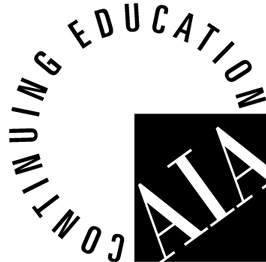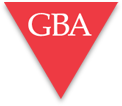
GBA is pleased to serve as an AIA continuing education provider. As a partner in the AIA's continuing education program, GBA strives to help AIA members maximize their professional skills in healthcare architecture.
The following seminars are AIA-approved and currently available from GBA. Please check back frequently for new seminar opportunities.
For more information on these programs, please contact us at 800-443-1415 or email:gba@gbainc.com.
Intelligent OR Infrastructure – Why You Need to Throw Away Your Room Templates
Length: 1 hour / Credit: 1 HSW unit
Description: One of the biggest challenges facing healthcare facilities infrastructure is integrating large numbers of diverse systems, medical devices, IT and clinical data into a cohesive platform. This is particularly critical in i‐ORs, hybrid rooms and other procedure rooms.
Traditionally, the process begins with AIA guidelines for OR square footage, then equipment and infrastructure is forced into it, often resulting in compromised clinical efficiencies, and eventual renovations that disrupt the largest revenue‐producing department in the facility.
Why not turn that process upside down and examine the equipment, workflow, and procedures first to develop a space that can wrap around them – and around the inevitable changes that will occur after occupancy?
This presentation analyzes a new methodology to design intelligent OR’s ‐‐ based not a room template ‐‐ but on an examination of future clinical processes, data, equipment and ergonomics. The session will push the boundaries of typical OR design to maximize layouts for all technology and any procedure.
Put Your Granny Glasses On - Broadening your perspective to include the elderly patient’s experience and use of technology
Length: 1 hour / Credit: 1 HSW unit
Description: Ten thousand baby-boomers a day join Medicare, a pace that will continue for a decade. While the design of the built environment has been evolving in response, technology has often been overlooked. Granny can’t see, grab, hear, or use the standard technologies being implemented.
The industry has recognized the need for specialized environments for pediatric patients. Now we must redefine our approach to the spaces, medical equipment, and IT devices to support an aging population.
Complex medical equipment and technologies can be made less cold, less daunting and more accessible if we focus our attention and change our perspective.
Technology Commissioning – It’s not just for the building management anymore
Length: 1 hour / Credit: 1 HSW unit
Description: Special building systems, medical equipment, and IT devices all have unique operational needs. Standard punch lists and vendor testing do not address the configurations required to meet operational intent, nor do industry standard commissioning techniques. Using actual project examples of complex commissioning challenges, this session will identify the work plan, testing, and training required for successful technology implementation.
Extreme Makeover: Transforming Your Existing Facility Into the Future‐Ready, High‐Acuity Hospital
Length: 1 hour / Credit: 1 HSW unit
Description: How soon will your hospital be the healthcare facility equivalent of a telephone booth out‐ side the headquarters of Apple? Can your facility accommodate the forces that are changing patient care now, five years from now, and beyond? New procedures and techniques are being invented every week, the ACO model is dramatically impacting room type ratios and staffing requirements, infrastructures are expanding, work flows are evolving, and patient demographics are changing. Many hospitals in operation today may not be equipped or prepared to respond to these changes.
This session will provide a range of insights that should be considered for incorporation into your facility upgrades, campus expansions and master plans.
A Day in the Life: Healthcare 2025
Length: 1 hour / Credit: 1 HSW unit
Description: This session will tell the story of a mythical hospital stay in 2025, told from the patient’s perspective – providing a glimpse of the future – how healthcare will change – how facilities and care delivery systems will evolve to support the future – how these advancements will alter and improve both the patient experience and quality of care delivered – and how planning, design and construction must change to address the future.
From typewriters to touchscreens – Designing facilities that incorporate technology for a multi-generational nursing staff
Length: 1 hour / Credit: 1 HSW unit
Description: Why should the project pay for technology that the nurses are not going to use? Or rather, how can we plan for technology and implementation so that it will be utilized by the nursing staff, and improve clinical outcomes? Nurse call systems are not bells anymore; charting is not on a clipboard; medications are not on the shelf - a minor in touch screen is now required. Owner- and contractor-furnished technology must be correctly integrated and configured to avoid project delays, budget overages, and change orders. The challenge of implementing complex technologies/infrastructure is complicated by the variations inherent in a multi-generational nursing staff.
The Owner’s IT team is Transmitting an SOS, But You Don’t Know Morse Code
Length: 1 hour / Credit: 1 HSW unit
Description: Technology miscommunication can sink your project. When the doors open, almost everything is dependent on IT. Unfortunately, design teams, contractors, IT vendors and medical equipment vendors are often like ships that pass in the night. Yet the systems for which the contractor and design team are responsible require constant communication and team integration. Learn to effectively communicate with the IT team, and through project examples, learn how to avoid some of the errors in translation and lost signals that wreck many projects.
The ACO Model: Using Technology to Maximize Efficiency
Length: 1 hour / Credit: 1 HSW unit
Description: The Accountable Care Organization, with its flat per‐life‐covered payment, demands efficiency. The primary hospital will serve as the mother ship, interconnecting clinics, physicians, offices, tertiary facilities and their patients. This model impacts the clinician’s workflow, the patient experience, technologies required and ultimately, the built environment. This session explores the change in patient and caregiver interaction and assesses the design impact of these technologies.
Clinicians need efficient facilities and technology makes it worse
Length: 1 hour / Credit: 1 HSW unit
Description: Building systems, medical equipment, and IT can create a disaster for healthcare facility directors and clinicians who just want the technology to work. Poorly conceived technology implementations can defeat operational intent. Many healthcare technologies can provide exceptional efficiencies and increase patient safety, but the General Contractor and technology vendors only understand their pieces of the puzzle. Operational configurations and technology integration management is now required for any successful project implementation. Commissioning of building systems has been an industry standard, but the complexity of healthcare technologies and the corresponding operational configurations now demands more. This session will discuss necessary design team planning requirements and review real project examples with lessons learned.
Avoiding Medical Device Alarm Fatigue through Design and Implementation Strategies
Length: 1 hour / Credit: 1 HSW unit
Description: In 2011 ECRI ranked alarm fatigue as second on the list of its top 10 health technology hazards. This session will examine current Joint Commission and FDA position on this issue, as well as design and implementation strategies for construction projects to minimize this very real threat to patient safety.
Technology’s Impact on Nursing Care and the Patient Environment
Length: 1 hour / Credit: 1 HSW unit
Description: Medical equipment and IT solutions, such as “smart patient rooms" are driving changes in the nursing staff work flow and the patient environment, and more technologies are being introduced at an ever-increasing pace. Equipment integrations, technology workflow solutions, mobile devices, home-based monitoring, and integrated systems all impact nursing care in today's projects. In addition, government incentives to implement Electronic Health Records are creating the need for older facilities to evaluate EHR workflow impact, medical equipment interfaces, physical limitations and infrastructure. This session will examine medical equipment and IT trends that impact nursing care and the built environment.
Healthcare Technology: Three Perspectives
Impact on the Designer, the Caregiver, and the Project Manager
Length: 1.5 hrs / Credit: 1.5 HSW units
Description: Medical Technology has become the primary source of medical information supporting care delivery in the hospital of today. Planning, design, and implementation of healthcare facilities today requires a working knowledge of care and treatment processes, the medical technologies that support those processes, information these technologies produce, and infrastructure necessary for capturing, storing, and accessing that information.
Designers need to understand the effect of technology advancement on planning and design, design flexibility required to address the future, and strategies for successfully implementing technologies within both traditional and alternative project delivery models.
Technology solutions are driving changes in nursing staff work flow and the patient care environment. Government mandated meaningful use of Electronic Medical Records by 2015 is presenting one of the greatest challenges yet faced by healthcare providers – every facility is in the process of implementation, yet many fail to recognize that the challenge is primarily operational, not technical.
Managing Medical Technology includes final selection, integration, and implementation during construction. Using real-life examples, this session explores the impact of technology change and delayed technology decisions on the project budget – and strategies for managing technology to minimize both budget and schedule impact.
GBA’s team of continuing education session presenters includes clinical and technical expertise and extensive design/construction project experience:
-
Ted Hood, BArch, SrVP/COO
William (Bill) Hinton, CNMT, MHA, VP
Robert Hume, BS, PE, CCNA
Lynne Ingle, RN, MHA, CNOR
Josh Kelly, BS, RCDD
Jeff Looney, VP
Jolene Lyons, RN, CNOR, CASC
Kelly Spivey, BA, VP
Nikki Tuft, BME, BE
Terry Esquibell, BS, VP
Carrie Condry, IIDA, LEED AP, EDAC
Christena Pearson, MSHCA
